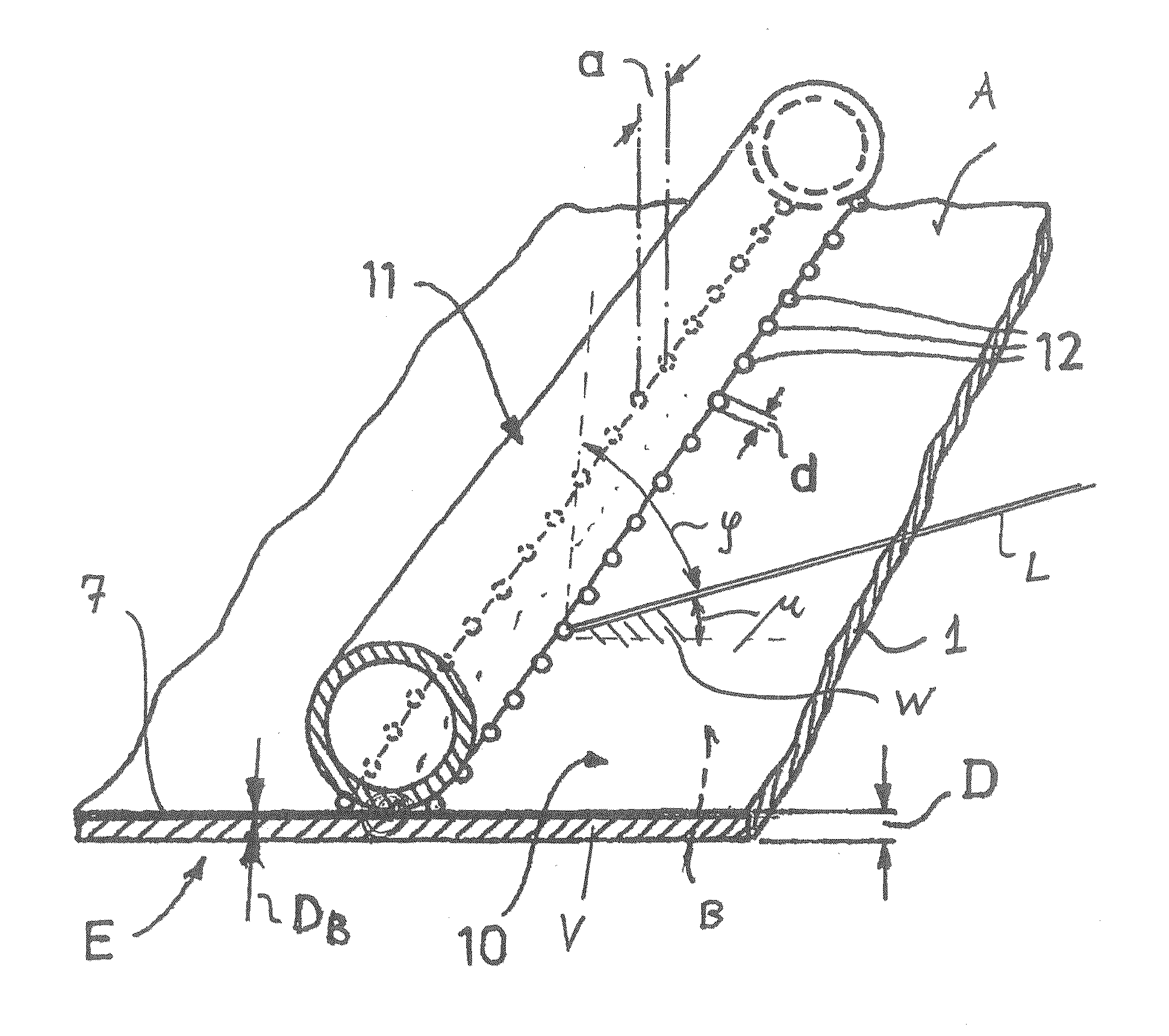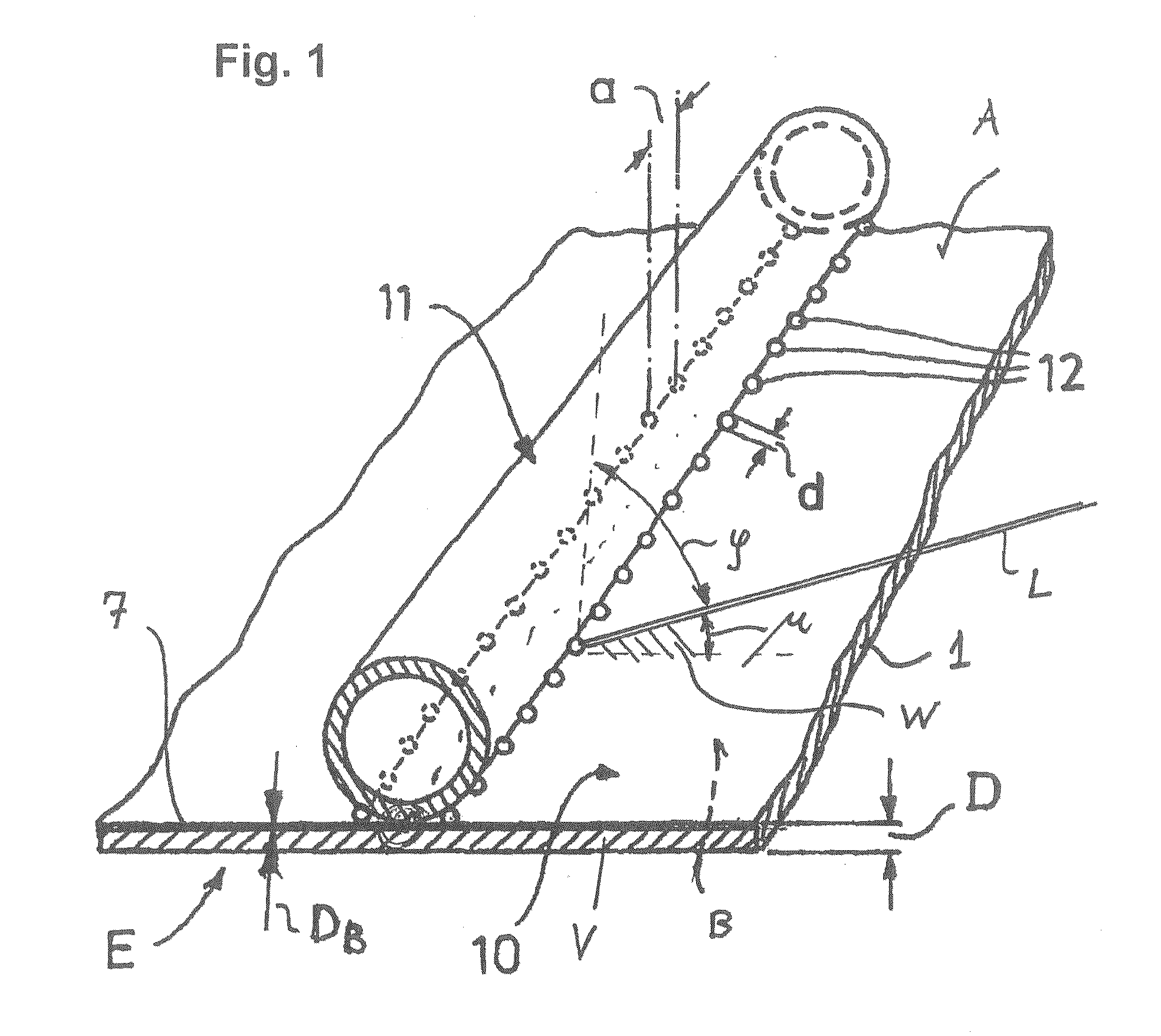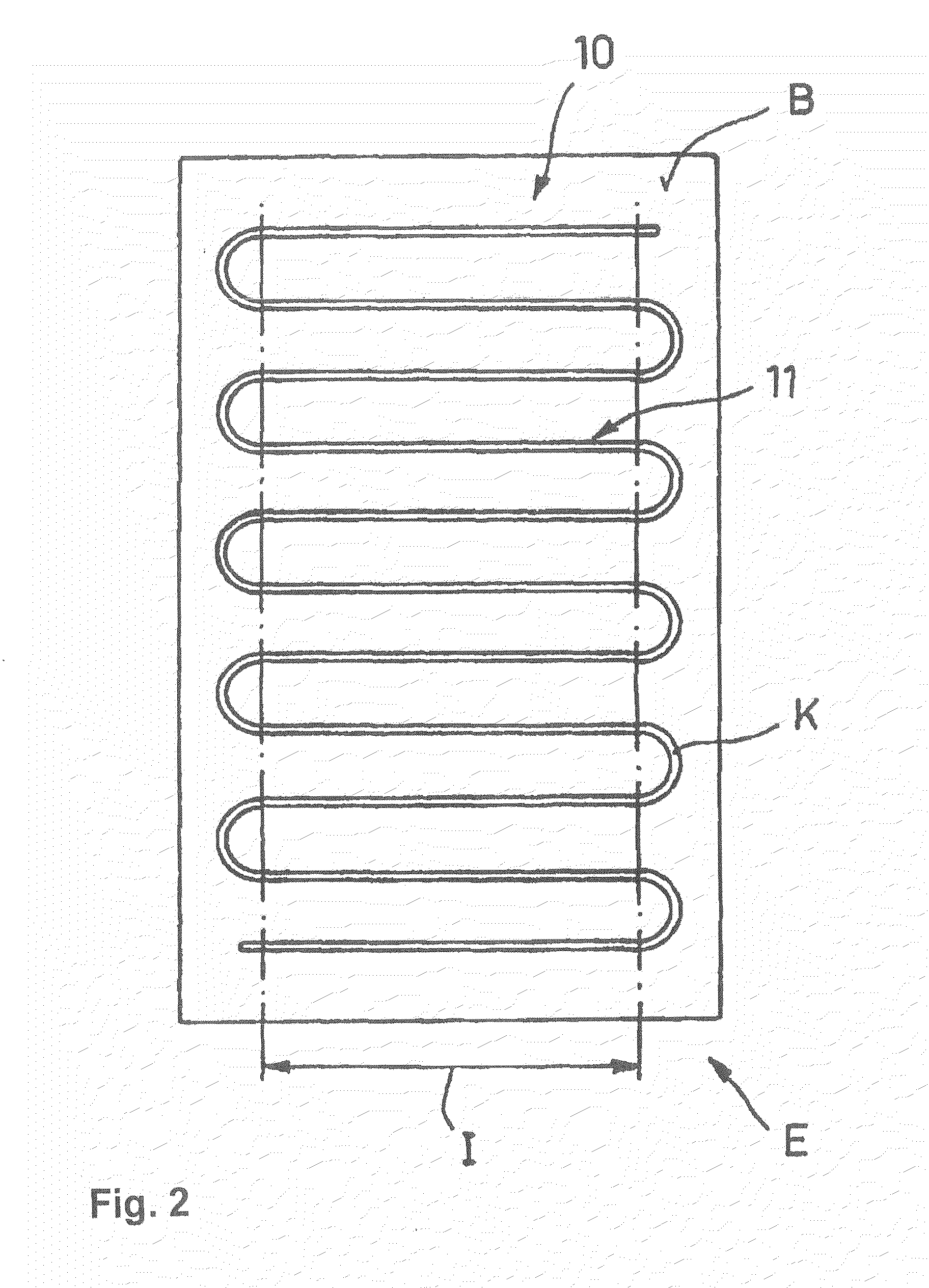Method for the laser welding of a composite material to a component, and laser-weldable composite material for such a method
- Summary
- Abstract
- Description
- Claims
- Application Information
AI Technical Summary
Benefits of technology
Problems solved by technology
Method used
Image
Examples
Embodiment Construction
[0029]FIGS. 1 and 2 illustrate the overall construction of a solar collector element E that can be produced according to the method according to the invention and with the composite material V according to the invention. From the solar collector element E, the drawing in accordance with FIG. 1 schematically illustrates an absorber part 10 and a tube 11 for a heat-transfer liquid—as an example of a component to be welded to the composite material V according to the invention.
[0030]The absorber part 10 is composed of the composite material V according to the invention, having a substrate 1 composed of aluminum—as an example of a metal having high reflectivity to laser radiation. The substrate 1 has a first side A and a second side B. On the substrate 1, a multilayer system 3 comprising three layers 4, 5, 6 is situated above an interlayer 2 on the second side B—as shown in FIG. 6—, which multilayer system will be explained in even greater detail below. A dielectric coating 7 is situate...
PUM
| Property | Measurement | Unit |
|---|---|---|
| Fraction | aaaaa | aaaaa |
| Fraction | aaaaa | aaaaa |
| Fraction | aaaaa | aaaaa |
Abstract
Description
Claims
Application Information
 Login to View More
Login to View More - R&D
- Intellectual Property
- Life Sciences
- Materials
- Tech Scout
- Unparalleled Data Quality
- Higher Quality Content
- 60% Fewer Hallucinations
Browse by: Latest US Patents, China's latest patents, Technical Efficacy Thesaurus, Application Domain, Technology Topic, Popular Technical Reports.
© 2025 PatSnap. All rights reserved.Legal|Privacy policy|Modern Slavery Act Transparency Statement|Sitemap|About US| Contact US: help@patsnap.com



